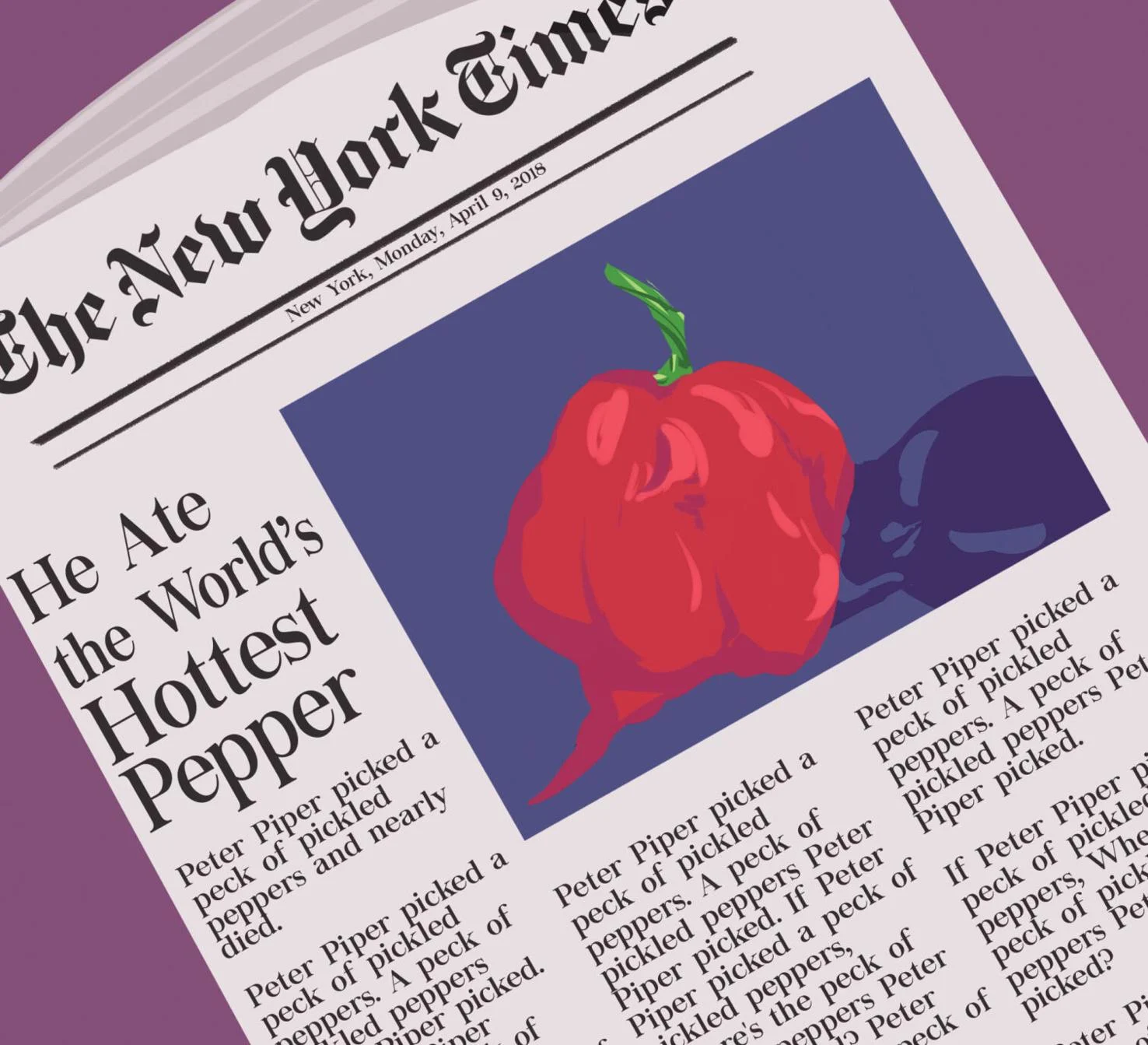
By Cole Graves
The New York Times recently took on the eccentric world of chili peppers and published an article in April about a New York man who ate a Carolina Reaper, the world’s hottest pepper according to Guinness World Records, in a pepper-eating contest.
He suffered the usual symptoms of ingesting the pepper — including dry heaves and cold sweats — but it didn’t stop there. He had to be hospitalized after experiencing extreme pain in his head and neck, and doctors came to the conclusion that he was suffering from thunderclap headaches, also known as reversible cerebral vasoconstriction syndrome.
But, a man who willingly ate the world’s hottest pepper, while participating in a hot-pepper-eating competition isn’t newsworthy material. It’s something that belongs on BuzzFeed, not in the second most popular newspaper by circulation in the United States, according to Statista, a provider of market and consumer data.Usually, when hearing about people who willingly subject themselves to extreme agony for extended periods of time, people would think those suffering are standing in line at the Department of Motor Vehicles, not biting into a pepper. But it turns out some people like pain.
People often compete in spicy food challenges or eat hot peppers to test their toughness based on the number of Scoville units, which is used to measure spiciness, they can tolerate. They are sometimes referred to as chileheads, chili heads or pepper heads and are a particular group of people who enjoy casual suffering with their meal.
This hobby extends beyond just eating whole peppers, as spice enthusiasts create extreme hot sauces and invite others to join them in their pain. These fiery condiments contain peppers and other pain-inducing extracts and spices, making for sauces with ridiculously high Scoville heat unit ratings.
Regardless of whether the article interests a small audience of people who might find this story important, it’s not news that belongs in a national newspaper. It’s more of an informational article about really hot peppers and the effects they cause when mixed with stupidity.
Articles like this are just clickbait made to cause social media hype. It turns out, the man who suffered the intense headaches was most likely sensitive to capsaicin, the chemical in the pepper’s seeds responsible for producing an inflammatory response and often causing an intense burning or itching after ingestion.
Measuring at around 1.5 million Scoville heat units, the Carolina Reaper reigns as the top pepper on the scale, despite recent claims that other peppers have surpassed it. In comparison, the average jalapeno measures from 3,500 to 8,000 units, making it around 400 times hotter than a jalapeno, according to Guinness World Records.
The New York Times is one of the most well-known newspapers in the country and has worldwide readership. Three million people subscribe to the paper and expect to receive quality news on a consistent basis.
A Pulitzer-winning newspaper like The New York Times prides itself in delivering ground-breaking investigative series and detailed coverage of national stories. A newspaper of such high quality isn’t expected to fall into the same lazy and desperate patterns as places like BuzzFeed by producing lame clickbait articles, so when a prestigious publication does, it tarnishes its reputation and is disheartening for journalism.
